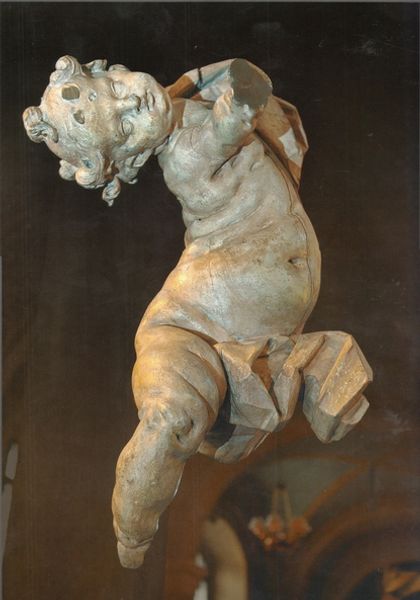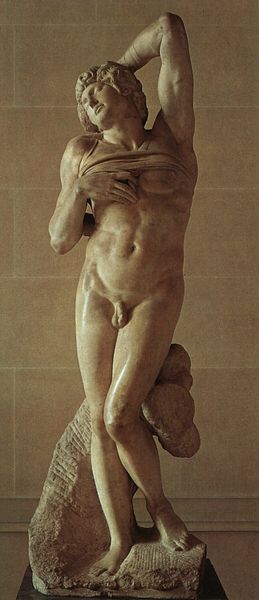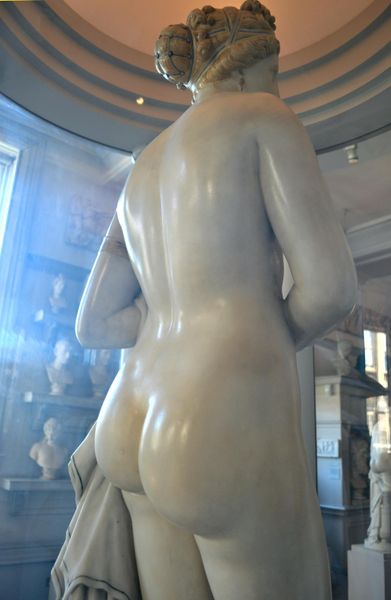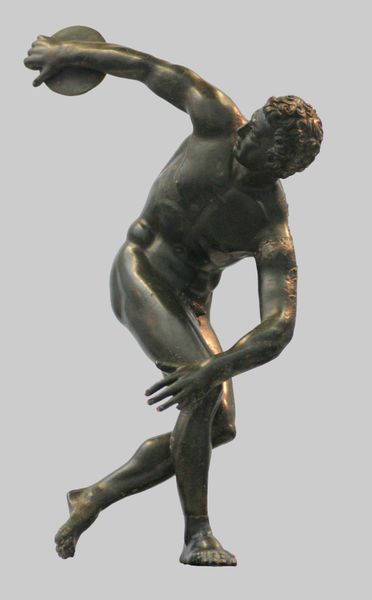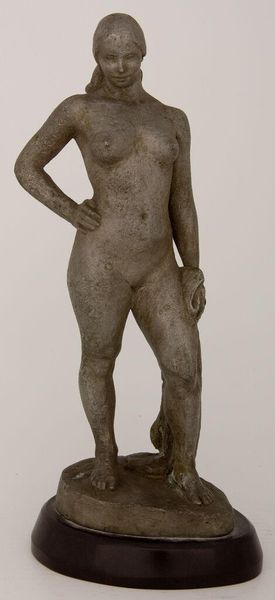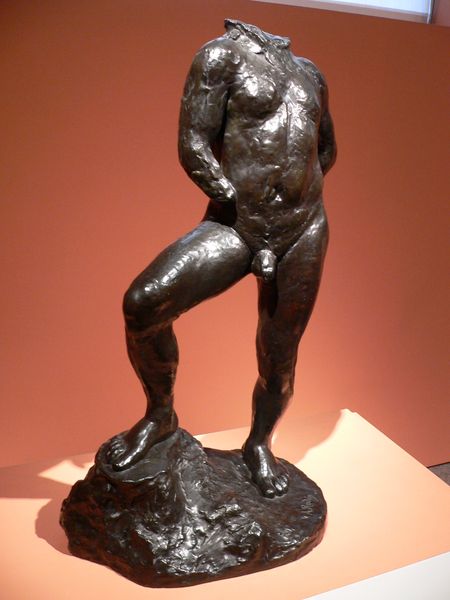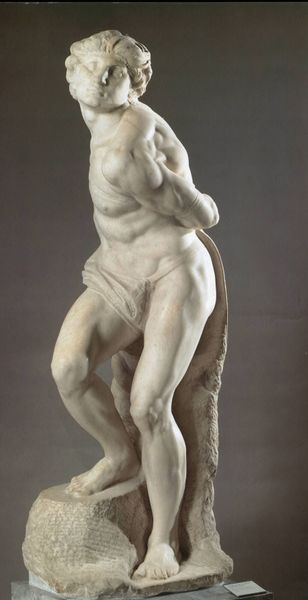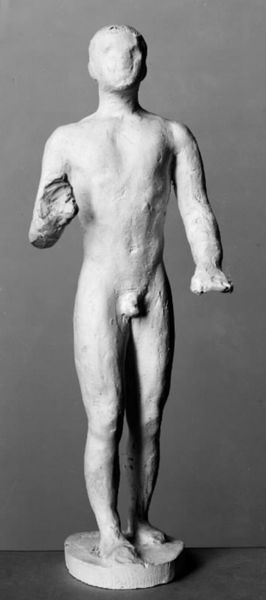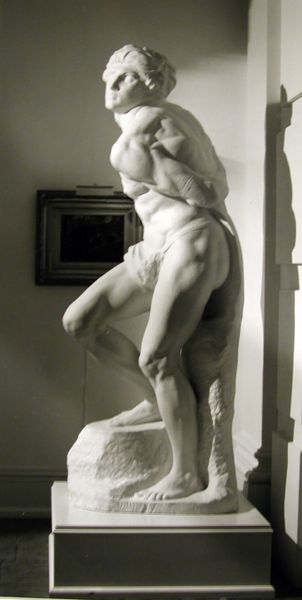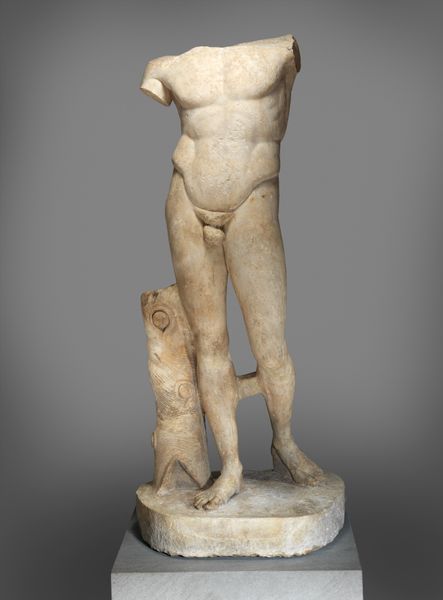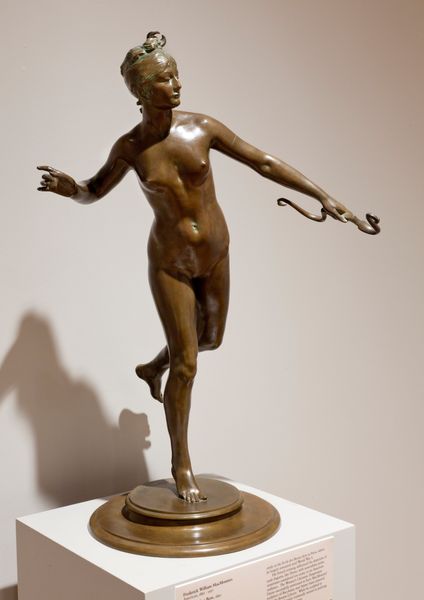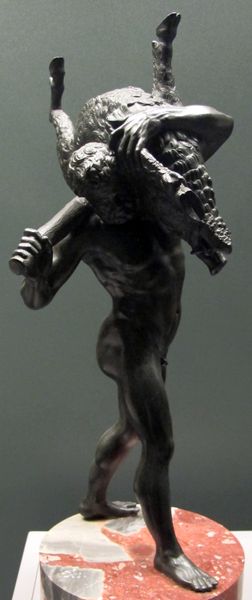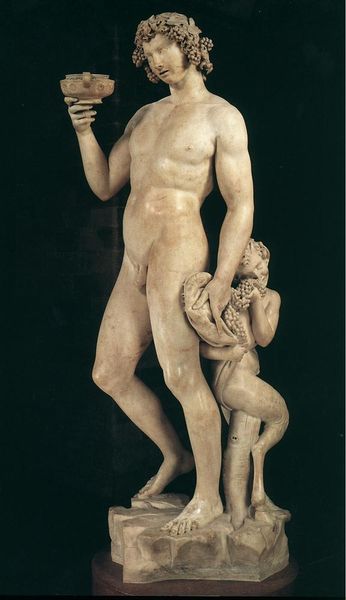
bronze, sculpture
#
portrait
#
statue
#
bronze
#
figuration
#
11_renaissance
#
sculpture
#
italian-renaissance
Copyright: Public domain
Andrea del Verrocchio, a leading artist in Florence, Italy, sculpted this marble ‘Putto in Equilibrio Su Un Globo’ during the Renaissance, sometime before his death in 1488. The image creates meaning through visual codes, cultural references, and historical associations. The putto or cherubic boy, a common motif in Renaissance art, is placed precariously on a globe. This embodies the era's preoccupation with balance, control, and a humanist understanding of the world. During the Renaissance period, wealthy patrons like the Medici family heavily influenced artistic production, shaping the style and subjects of art. The Florentine Republic, with its guilds and workshops, further impacted the art scene, dictating styles and the training of artists. This sculpture may reflect the social structures of its time, presenting an idealized, classical vision of humanity, a cultural value the Renaissance strongly promoted. Studying patronage records, guild regulations, and contemporary writings helps us understand the social and institutional contexts that gave rise to such art.
Comments
No comments
Be the first to comment and join the conversation on the ultimate creative platform.
